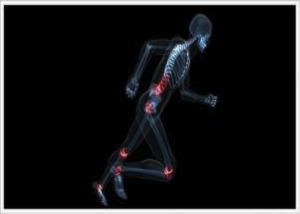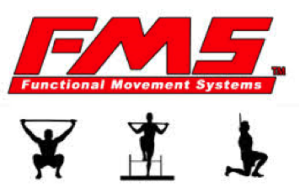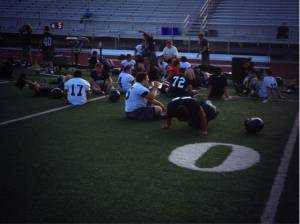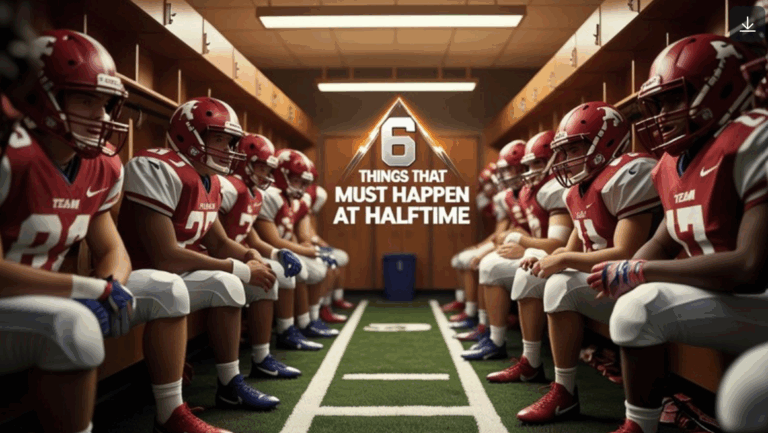
I love using this website as a great resource for coaches! I also love having guest coaches to share THEIR knowledge! Have an idea for a guest blog? Send me an email! coach @coachfore.org. Big thank you to this tremendous article by:
By Alfredo Ibarra MA CSCS @Alfredo5Ibarra on Twitter
Now that the new year has started, most football coaches are excited to get back to work for the 2015 football season. Over the next few months, we will spend hours trying to improve ourselves by attending clinics, speaking with other coaches, and doing what we can to help our teams be successful. Whether you went 0-10 or won a league championship, all of the players on your upcoming team can benefit from off-season workouts. I will provide a few suggestions and write a few articles on how taking a few of these steps could help improve your teams’ preparation to deliver results for the 2015 season.
1) Assess Movement
After a long football season, players need time to recover. It is important to allow players who had serious or minor injuries to recover and be able to move well to be able to take on the demands of rigorous off-season lifting and running.
Assessing movement is critical to helping reduce the likelihood of your athletes sustaining an injury. If your players move well, meaning they can position perform different movement task without compensation or pain. If you don’t have a strength and conditioning coach or a coach that is comfortable doing this, reach out to other coaches. Most strength and conditioning coaches are more than willing to help out with any questions you may have.
With that said, a common movement assessment is the Functional Movement Screen. This is one type of assessment many strength and conditioning coaches use. The test will give athletes an opportunity to demonstrate if they have the mobility and stability to perform fundamental movements. The test is simple; there are 7 movement tests that are scored from 0-3. A 3 is given if the individual can perform the movement without any compensations, a 2 is given if the individual can perform the movement but must utilize poor mechanics and compensatory patterns to accomplish the movement, a 1 is given if the individual cannot perform the movement pattern even with compensations, and finally, a 0 is given if the individual has pain during any part of the movement or test.
If your players don’t do well on a certain aspect of this test, then it means that they are not moving well on the field. As a result of improper movement, there could be a breakdown in the kinetic linking system, causing inefficiency and microtrauma during activities (Cook, Burton, Kiesel, Rose, & Bryant, 2010).
This is why assessing movement is so critical, you want your players to be healthy and to avoid any problems as they start to get bigger and stronger. Additionally, as the season gets going, you want to have a system to ensure that players get the attention they need from someone on staff or the athletic training staff. If that is not possible, then maybe reaching out to someone who is familiar with this system could help improve your program this off-season.
If you are interested, you can look up strength and conditioning coaches on the NSCA website or look for someone who is FMS certified at http://www.functionalmovement.com/experts.
2) Monitor and track progress
Monitoring your progress is important to help show what exercise and programming choices are helping your team. It is also important to monitor how much volume and stress your athletes are taking. For instance, if you are lifting, running, doing plyometric workouts, and also participating in a sport can be quite taxing on an athlete’s body.
Writing down what and how many of specific exercises can help you determine what needs to change later as you start adding more. In the weight room it is important to keep ratios 1:1 for pulling and pushing. Meaning if you squat, make sure you do a hinge exercise (deadlift, RDL’s, good morning, etc.). If you do a push exercise like the bench press, make sure you have a pull such as a row.
3) Create a system
One of the best things you can do for your program is to have a system for each level. The freshman in your program should not be doing the same thing as your varsity. Some players may progress quicker than others, but all should be able to perform exercises with great technique.
This is where your system comes into place. You should be able to have a list of regressions and progressions in case an athlete cannot perform a specific exercise or is ready to move on to something more advanced. This can also be applied to running. First, teach athletes how to run. Teach them how to run out of specific positions and starts and also how to cut and change direction.
At the high school level, it is all about resources. You may have access to a great weight room or a limited one. What you decide to do in your program should answer some of these questions:
What lifts will you include in your program? (squats, deadlifts, Olympic lifts, etc.) What will be your focus?
Will you work out before, after school, during the last period of the day? Do you have time restrictions or large groups? Will you circuit train or have two separate groups of lifting and running?
How many days a week will you train? What will your workouts look like from Jan-May, June & July, and August-November/December?
4) Get your best coaches and athletes to demonstrate
While teaching new lifts or demonstrating what your workout will be for the day, it’s best to have the best coaches and athletes demonstrate to reinforce technique and execution. If you have someone teach it that doesn’t perform the technique well, then your players will not perform the lifts well!
5) Overemphasize technique and mechanics
Teenage boys and football players usually want to go heavy and may not be concerned too much with technique. As a coach, always overemphasize technique and mechanics to help maintain safety in the weight room. The first rule of strength and conditioning is do no harm. You would never want to lose a player to an injury in the weight room. If a player is having trouble squatting low or with a specific lift, pay attention to that. There may be something you need to address. Some players can benefit from a few sets of extra technique work to supplement your main workout.
6) Incorporate competition
There are endless possibilities as to how you can get your team to compete. Whether if you want to do a challenge in the weight room with several teams, tug of war, or running relays. Getting your athletes to compete and build camaraderie with each other is a key component to building a team.
7) Keep lifting heavy in the summer and during the season
One of the issues I have ran into while talking with other coaches is that some stop emphasizing the weight room around the summer time and really back off during the season. You want to be playing your best football and be strong in November when league championships are on the line and you may have a shot to make a run at the playoffs. Workouts don’t have to be as taxing as they were during the off-season, however, athletes should still be lifting at an intensity where they are challenged. One method of lifting heavy during the season is that you can have a tough heavier workout on Monday and a lighter more dynamic workout on Wednesday. Some teams may have that heavier day be on Saturday and lighter workouts during the week.
8) Implement recovery strategies
The better your athletes can recover, the better they will be able to push themselves and be ready to for their next workout or practice. One of the first things you can do is to educate your team on nutrition. Nutrition plays such a big role in our lives that sometimes we neglect it. Educating your players as to what to eat and drink could help them feel better and have better workouts.
Active rest can be a way of helping athletes recover after tough workouts by performing activities such as, light jogging, cycling, swimming, or doing yoga. Most high schools may not have access to tools for hydrotherapy but if you do great! As an alternative, a contrast shower is something you can teach your players to do at home.
Another way to help athletes feel and move better is to do some soft tissue work. If you don’t have access to foam rolls or tennis balls, you can always use barbells to perform the task. Doing this every day can help get rid of aches, pains, and muscle tightness to enhance your training and performance.
Here is a link of what USC was doing while really being limited on their scholarship players. You may not have access to some of these resources, but educating your players and applying some of these principles can help. http://www.usctrojans.com/blog/2011/11/recovery-24.html









